Kokopelli – Popular Trickster God Of The American Southwest Brought Happiness To People
Ellen Lloyd - AncientPages.com - There is something special and fascinating about Kokopelli, the Native American trickster god. Known under various names among several Native American tribes and sometimes nicknamed "Casanova of the Cliff Dwellers," his popularity seems timeless.
Playing on his magical flute, we encounter many petroglyphs and rock carvings of Kokopelli throughout the American Southwest.
Some of these rock carvings paintings are estimated to be 3,000 years old, and this clearly shows people kept the memory of Kokopelli alive, generation after generation.
Left: Kokoppeli in modern art. Credit Public Domain - Middle: Kokopelli petroglyph located on land near Embudo, New Mexico. Credit: Public Domain. Right: Kokopelli in front of a Camp Verde, Arizona coffee shop. Credit: Public Domain
There are many stories about Kokopelli, who was not only a trickster god. Kokopelli is also remembered as a fertility god, healer, and wonderful storyteller. His humpback was a bundle where he carried sacred objects, seeds, and songs.
Kokopelli was a source of happiness and joy. Kokopelli would visit villages, playing his flute, and people would sing and dance all night.
Kokopelli's Flute Playing - A Symbol Of The Transition Of Winter To Spring
Perhaps the most perplexing part of Kokopelli's visit is what happened afterward. As soon as Kokopelli left the village in the morning, the crops grew, and many women suddenly became pregnant. So, it's no wonder he was nicknamed "Casanova of the Cliff Dwellers."
His flute was of great importance to Native Americans. When he played on his flute, the snow melted, grass grew, and birds began to sing. In many myths and legends, it is therefore said that this fascinating fertility god was responsible for the end of winter and the coming of spring.
Kokopelli Was And Still Is Worshipped By Many Native American Tribes
Kokopelli was significant to the ancient Anasazi, also known as the Ancient Ones. The Anasazi occupied the valleys and plains in North America's "Four Corners" region (where Utah, Colorado, Arizona, and New Mexico meet at the corners).
Petroglyph of Kokopelli in the "Rio Grande Style" of the ancestral Pueblo culture after the year 1300 AD; taken at Mortendad Cave near Los Alamos, NM. Credit: Larry Lamsa - Flickr - CC BY 2.0
The Hopi were also familiar with Kokopelli, mentioned in their emergence and migration account. According to the Hopi legend, when their people emerged into the Fourth World (our current world), they encountered an eagle that shot an arrow into insects that carried the power of heat. These insects, known as máhus were not seriously harmed because their bodies healed as soon as they started to play on their flute. The two máhus accompanied the Hopi on their migration.
One of these insects was called Kókopilau (kóko meaning "wood" and pilau meaning "hump") because he looked like wood. He played on his flute and carried a bag of seeds that he had scarred across the lands. The astounding music of his flute made the roots grow.
The Hopi myth can also explain why many depictions of Kokopelli make him very insect-like in appearance.
Kokopelli – A Popular Native American God Who Made People Happy
The origin of Kokopelli's name is not entirely clear, but it may have been derived from the Zuni name for god ("Koko") and the Indian name for the Desert Robber Fly ("pelli"). Some scholars trace the origin of Kokopelli to ancient Aztec traders known as pochtecas, who were professional, long-distance traveling merchants in the Aztec Empire. They used to carry their goods in sacks slung across their backs, and this sack may have evolved into Kokopelli's familiar hump.
Kokopelli and Kokopelli Mana as depicted by the Hopi - Credit: Jesse Walter Fewkes, Hopi katcinas drawn by native artists, 1903. Public Domain
Kokopelli also had a female counterpart known as "Kokopelli Mana." Kokopelli was a charismatic, playful, intelligent god who, according to some tribes, was also a spiritual priest with actual healing powers. To the Zuni Indians, he was a rain priest, and the Navajo believed he was the god of the harvest. He was also regarded as representing the spirit of music.
Legends about Kokopelli vary, and he was assigned many different roles and responsibilities. y ed. Kokopelli seemed to bring out the "good" in everyone, which could be one of the reasons this Native American god has captured the imagination and hearts of so many people. We know with certainty that Kokopelli is still worshipped among many Native American tribes, and his popularity has never ended.
Today, one can encounter images of Kokopelli not only on ancient rock carvings but also on T-shirts, ball caps, and key chains.
See also: Lyman Lake Petroglyphs And Famous Kokopelli-Flute Player Left By Ancestors Of The Hopi Indians
Due to his popularity, Kokopelli has been adopted as a broader symbol of the Southwestern United States.
Updated on March 28, 2024
Written by - Ellen Lloyd – AncientPages.com
Copyright © AncientPages.com. All rights reserved. This material may not be published, broadcast, rewritten or redistributed in whole or part without the express written permission of AncientPages.com
Expand for references
More From Ancient Pages
-
 Scathach – The Shadowy One – Legendary Martial Arts Teacher Who Trained Cuchulainn And Other Warriors
Featured Stories | Mar 4, 2019
Scathach – The Shadowy One – Legendary Martial Arts Teacher Who Trained Cuchulainn And Other Warriors
Featured Stories | Mar 4, 2019 -
 Ancient Script Reveals Mysterious Location Of Legendary Hanging Garden Of Babylon
Featured Stories | Apr 4, 2014
Ancient Script Reveals Mysterious Location Of Legendary Hanging Garden Of Babylon
Featured Stories | Apr 4, 2014 -
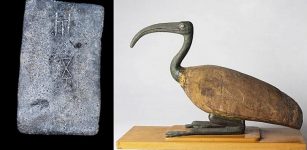 Has The Mystery Of Bronze Age Tin Been Solved?
Archaeology | Oct 3, 2019
Has The Mystery Of Bronze Age Tin Been Solved?
Archaeology | Oct 3, 2019 -
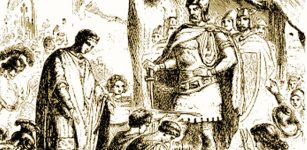 On This Day In History: Emperor Romulus Augustus Deposed – On September 4, 476
News | Sep 4, 2016
On This Day In History: Emperor Romulus Augustus Deposed – On September 4, 476
News | Sep 4, 2016 -
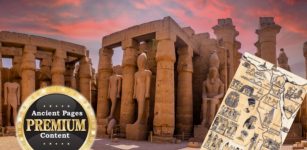 Where Is The 12,000-Year-Old Map That Could Change All We Know About Ancient Egypt Hidden?
Featured Stories | Mar 21, 2021
Where Is The 12,000-Year-Old Map That Could Change All We Know About Ancient Egypt Hidden?
Featured Stories | Mar 21, 2021 -
 Teens Make Incredible Discovery In An Ancient Florida Cave
Featured Stories | Mar 15, 2024
Teens Make Incredible Discovery In An Ancient Florida Cave
Featured Stories | Mar 15, 2024 -
 What Are The Most Common Misconceptions About Pirates?
Ancient History Facts | Apr 16, 2024
What Are The Most Common Misconceptions About Pirates?
Ancient History Facts | Apr 16, 2024 -
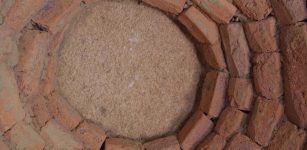 Smallest Ancient Thracian Brick Tomb – Discovered In Bulgaria
Archaeology | Oct 6, 2018
Smallest Ancient Thracian Brick Tomb – Discovered In Bulgaria
Archaeology | Oct 6, 2018 -
 1,500-Year-Old ‘Magical Mirror’ To Protect Against Evil Eye Discovered By A Teenager In Israel
Archaeology | Aug 9, 2023
1,500-Year-Old ‘Magical Mirror’ To Protect Against Evil Eye Discovered By A Teenager In Israel
Archaeology | Aug 9, 2023 -
 Dingoes Given ‘Almost-Human’ Status In Pre-Colonial Australia – Archaeological Study Finds
Archaeology | Oct 21, 2023
Dingoes Given ‘Almost-Human’ Status In Pre-Colonial Australia – Archaeological Study Finds
Archaeology | Oct 21, 2023 -
 Why Was The Iron Age Village Near Elgin In Scotland Suddenly Abandoned And Burned Down?
Archaeology | Jul 29, 2022
Why Was The Iron Age Village Near Elgin In Scotland Suddenly Abandoned And Burned Down?
Archaeology | Jul 29, 2022 -
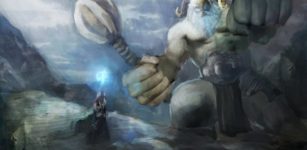 Geirrod: Giant That Tried To Kill God Thor But Was Killed Himself
Featured Stories | Sep 24, 2019
Geirrod: Giant That Tried To Kill God Thor But Was Killed Himself
Featured Stories | Sep 24, 2019 -
 New Insight On What Ancient Noses Smelled
Archaeology | Mar 29, 2023
New Insight On What Ancient Noses Smelled
Archaeology | Mar 29, 2023 -
 Oldest Human Genome From The Iberian Peninsula Helps Reconstructing Human History
Archaeology | Mar 1, 2023
Oldest Human Genome From The Iberian Peninsula Helps Reconstructing Human History
Archaeology | Mar 1, 2023 -
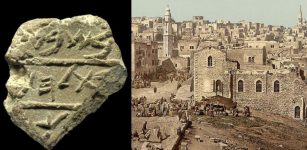 Ancient Seal Found In The City Of David: Evidence Of Bethlehem’s Existence Long Before Jesus Was Born
Archaeology | May 24, 2012
Ancient Seal Found In The City Of David: Evidence Of Bethlehem’s Existence Long Before Jesus Was Born
Archaeology | May 24, 2012 -
 On This Day In History: Riot Over Wine In Oxford – On Feb 10, 1355
News | Feb 10, 2017
On This Day In History: Riot Over Wine In Oxford – On Feb 10, 1355
News | Feb 10, 2017 -
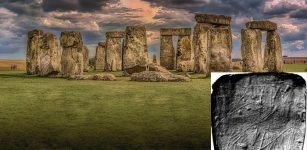 New Light On Prehistoric Chalk Plaques From Stonehenge Using Innovative Technology
Archaeology | Nov 3, 2021
New Light On Prehistoric Chalk Plaques From Stonehenge Using Innovative Technology
Archaeology | Nov 3, 2021 -
 Is The Intriguing Underwater Structure Beneath Lake Michigan Man-Made Or A Natural Formation?
Featured Stories | Dec 7, 2023
Is The Intriguing Underwater Structure Beneath Lake Michigan Man-Made Or A Natural Formation?
Featured Stories | Dec 7, 2023 -
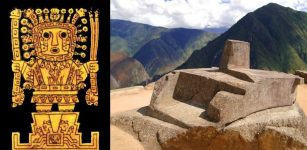 Mysterious And Sacred Intihuatana Stone Of The Inca Was More Than Just An Astronomy Calendar
Archaeoastronomy | May 8, 2018
Mysterious And Sacred Intihuatana Stone Of The Inca Was More Than Just An Astronomy Calendar
Archaeoastronomy | May 8, 2018 -
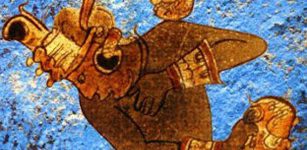 Mystery Of The Maya Blue Pigment And Its Unusual Chemical Composition
Ancient History Facts | Mar 23, 2016
Mystery Of The Maya Blue Pigment And Its Unusual Chemical Composition
Ancient History Facts | Mar 23, 2016



